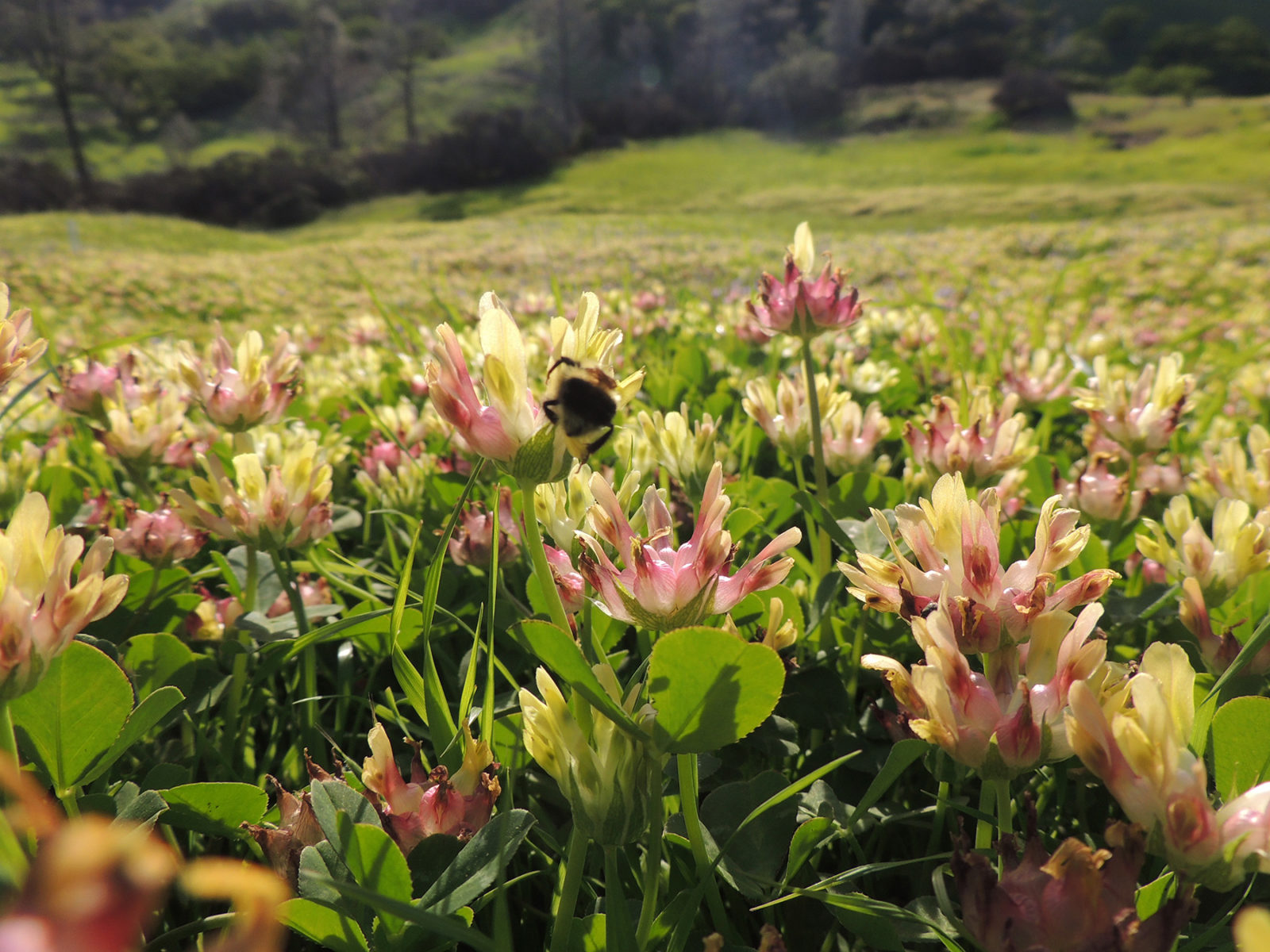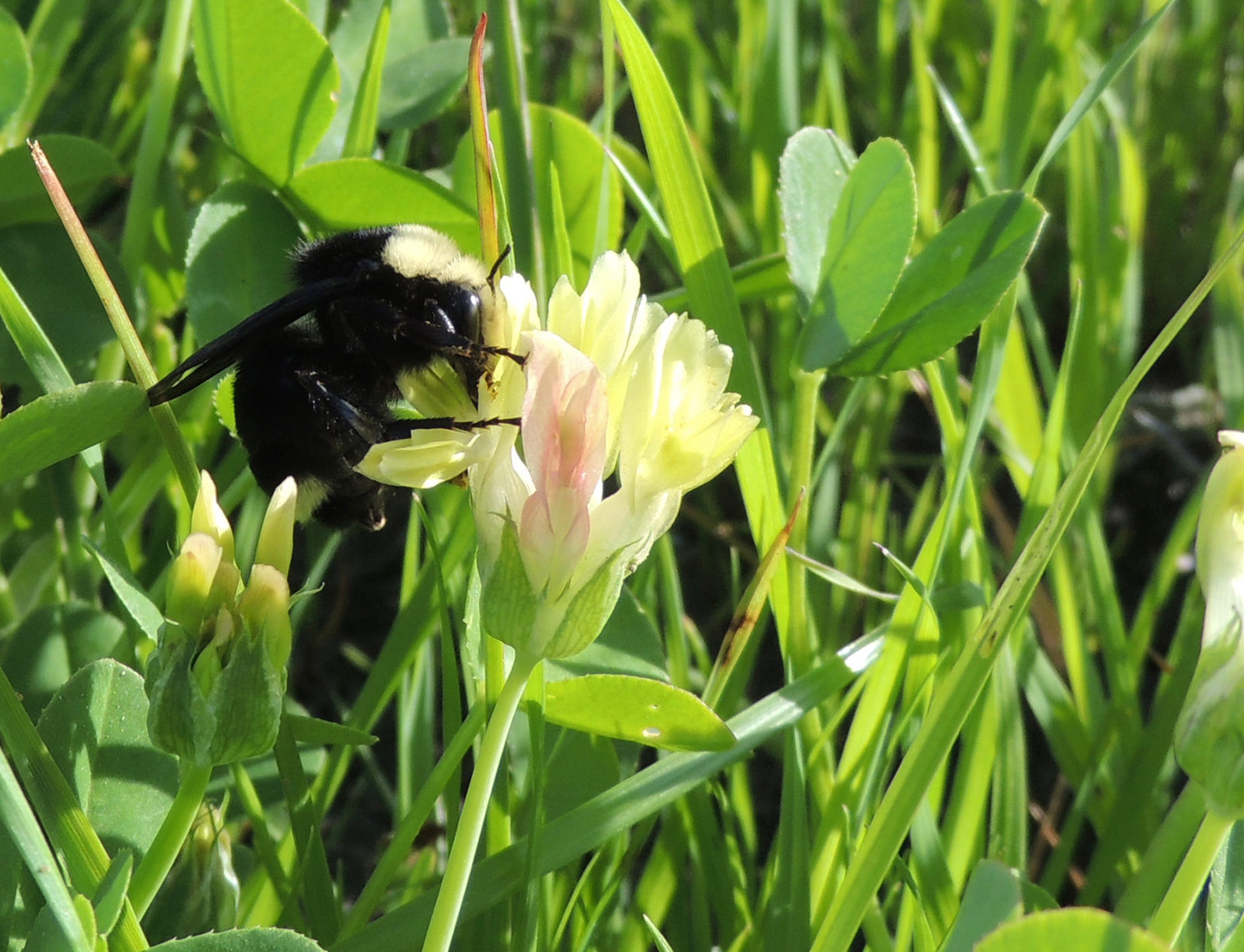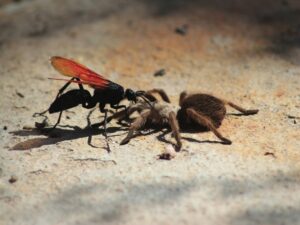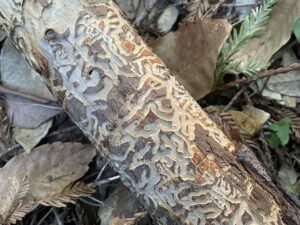Over the last decade scientists have shown widespread insect declines driven by human encroachment, changes in land management, and climate change, leading to headlines of an “insect apocalypse.” But two recent studies on bumblebee populations after fires in Northern California show how hard it is to measure change, and even more, to make sense of it.
Bumblebees live in wildly different types of habitats, have unique tastes, and aren’t necessarily the easiest things to track, making it hard to understand how their populations are faring.
In 2015, John Mola, an ecologist with the US Geological Survey in Fort Collins, Colorado, was investigating the foraging habits of the common yellow-faced bumblebee, Bombus vosnesenskii, when two wildfires ripped across his field sites in the University of California’s McLaughlin Natural Reserve near Davis. Mola had been collecting information about the bee species for a few months before the fires, and given the unexpected opportunity, pivoted his research to look at the effects of the fire on the bees.
The fires leveled much of the chaparral where Mola worked. With larger shrubs and manzanitas that typically crowd out the landscape scorched, a surplus of resources — water, soil nutrients and sunlight — became suddenly up for grabs.

Within months, smaller grasses and wildflowers thrived. And this pulse of resources, Mola reported in an article in the Journal of Animal Ecology in May, boosted bumblebees across both burned and unburned sites in the reserve. Using rulers, genetic testing, and nets, Mola determined that bumblebee body size, number of colonies, and queen bee counts surged in the immediate years following the fire.
Mola says he concludes that many common bees respond to environmental change and are limited by resources. People might help bees with actions to boost those landscape resources, including prescribed burns, restoration planting, and invasive species removal. “If we can find ways to consistently provide more resources, there are still opportunities to build healthier populations of this species, and perhaps others,” he says.
But another study of bees following fire, led by San Francisco State ecologist Gretchen LeBuhn, has found what seems at first like the opposite result.
LeBuhn’s work looked at measurements of diversity and abundance in the oak woodlands of Napa and Sonoma County before and after the 2017 North Bay Fires. In 2002, Lebuhn led a study measuring which of the 1,500 bee species native to California frequent those forests. Four of the eight sites she’d documented burned in 2017. So in spring 2018, LeBuhn and then-graduate student Molly Martin, now a community engagement coordinator at the Xerces Society, revisited all of the sites.
“We were interested in whether or not bee communities changed in response to fire,” LeBuhn said. They used the same approach as the initial collection nearly 15 years ago — large nets to capture anything flying through the sites. This information fed into network diagrams that traced a line between each bee species observed and their visits to different sites.
LeBuhn and Martin sampled both burned and unburned spots. But unlike Mola’s study, LeBuhn’s results didn’t show the bees thriving following the fire.
“Much to our surprise, we didn’t see as many differences as we expected,” LeBuhn said.
LeBuhn and Martin observed an overall decline. They found fewer species and a lower bee abundance in almost all of the burned and unburned areas. LeBuhn says she doesn’t blame the fire — the results suggest to her declines over time, and that changes to environment and land management practices have led to diminished bee communities.
“The magnitude of time was much greater than the magnitude of fire,” she says.
Both researchers say the other’s design and methods were sound. The opposing results, they both reason, speak to the complexities that researchers face as they race to chronicle declining insect populations.
No two environments, just like no two bumblebee species, are the same. Despite a similar charred look in landscapes after the fires, LeBuhn points out that her sites are different from Mola’s, and so have completely different effects on pollinator populations following fire.
“The benefits of fire to plants weren’t apparent in any of the places we sampled, whereas they were in Mola’s study,” she said.
Unlike the oak woodlands where Lebuhn worked, chaparral is dominated by patches of low-lying, woody shrubs and small trees that don’t allow for many ground plants to grow. “The effects of fire in chaparral last a lot longer,” Mola said.
Although the shrubs begin to regrow in these habitats in the years following a fire, it takes longer for a canopy to re-form. This leaves more time for the smaller plants, and their pollinators, to thrive. Lebuhn said there’s no equivalent resource pulse following an oak woodland fire, so that her finding in the forest “strengthens” Mola’s conclusion that the chaparral resource pulse contributed to the increased bee population.
“There’s a dizzying array of insects that have adapted to an even dizzier array of environmental pressures. So we shouldn’t expect them to respond to fire, or any other pressure, in the same way.”
Fire can be a powerful reset to a landscape, but coupled with a warming climate it poses a serious threat to an already hazy problem of insect population studies. “Seeing two opposing studies illustrates the mass complexities in insect declines,” Mola said. “There’s a dizzying array of insects that have adapted to an even dizzier array of environmental pressures. So we shouldn’t expect them to respond to fire, or any other pressure, in the same way.”
Beyond fire there are plenty of other issues that are largely known to hurt pollinators, especially habitat loss and pesticide use. How researchers and policymakers piece together all of these different pressures against dwindling insect populations will be critical to helping many insects survive the 21st century.
“All of these studies help us reinforce our understanding of what’s going on,” LeBuhn says. “I think about each of them as a brick, and now we have another piece that we can use to finish the wall.”





